1996 Toyota Supra Repair, Service & Tires
Get Started
Complete Auto Care for Your 1996 Toyota Supra
-
TIRES FOR YOUR 1996 Toyota Supra View Tire Info GET TIRE PRICING
-
REPAIR FOR YOUR 1996 Toyota Supra View Repair Info SCHEDULE REPAIR
-
MAINTENANCE FOR YOUR 1996 Toyota Supra View Maintenance Info SCHEDULE MAINTENANCE
-
OFFERS FOR YOUR 1996 Toyota Supra Limited Time Tire Offers VIEW ALL COUPONS
1996 Toyota Supra Tires
Recommended Tires | Tire Information
1996 Toyota Supra Tires Sizes, Speed Ratings, and Inflation
Not sure about your 1996 Toyota Supra tire size? Use the following chart to find information on tire size, speed rating, and inflation.
| Trim Level | Speed Rating | Inflation in PSI F/R | Tire Size |
|---|---|---|---|
| 1996 Toyota Supra Base* | Z | 33 PSI/ PSI | 225/50ZR16 |
| 1996 Toyota Supra Base* | Z | PSI/36 PSI | 245/50ZR16 |
| 1996 Toyota Supra Twin Turbo* | Z | PSI/33 PSI | 255/40ZR17 |
| 1996 Toyota Supra Twin Turbo* | Z | 33 PSI/ PSI | 235/45ZR17 |
|
1996 Toyota Supra Base* Speed Rating: Z Inflation F/R: 33 PSI/ PSI |
|
1996 Toyota Supra Base* Speed Rating: Z Inflation F/R: PSI/36 PSI |
|
1996 Toyota Supra Twin Turbo* Speed Rating: Z Inflation F/R: PSI/33 PSI |
|
1996 Toyota Supra Twin Turbo* Speed Rating: Z Inflation F/R: 33 PSI/ PSI |
* Note: these models have different tire sizes depending on vehicle options.
Recommended Tires for Your 1996 Toyota Supra
What tires are best for a 1996 Toyota Supra? Check out the following tire brands and types.
 Blizzak WS90
Blizzak WS90
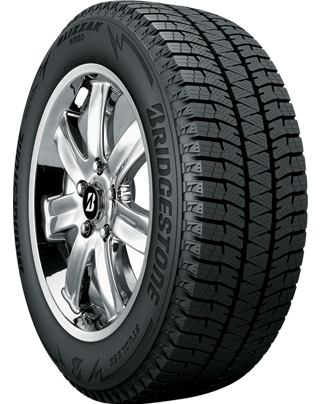
- No warranty
- Winter
- Winter
 Potenza RE71RS
Potenza RE71RS
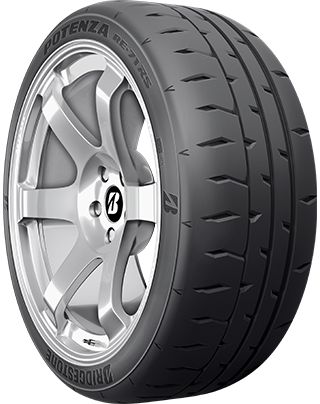
- No warranty
- Summer
- Performance
 Potenza Sport AS
Potenza Sport AS
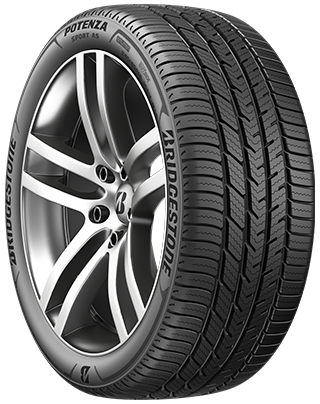
- Platinum Pact Limited Warranty
- All-Season
- Performance
 Potenza RE050A I RFT
Potenza RE050A I RFT
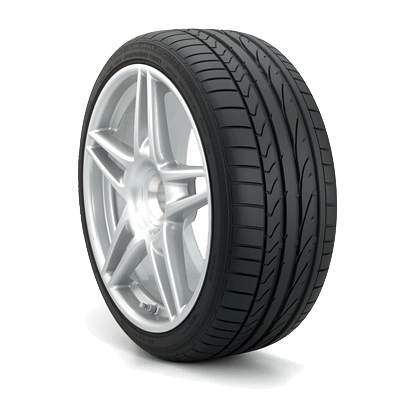
- Platinum Pact Limited Warranty
- Summer
- Performance
 Firehawk Indy 500
Firehawk Indy 500
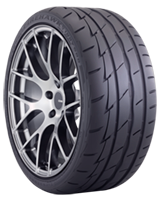
- Gold Pledge Limited Warranty
- Summer
- Performance
 Firehawk AS V2
Firehawk AS V2
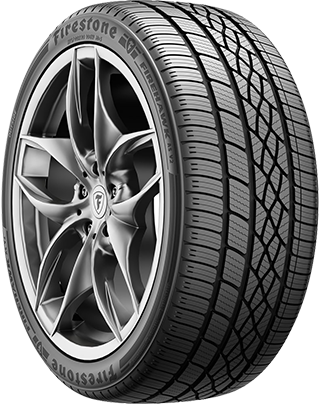
- No warranty
- All-Season
- Performance
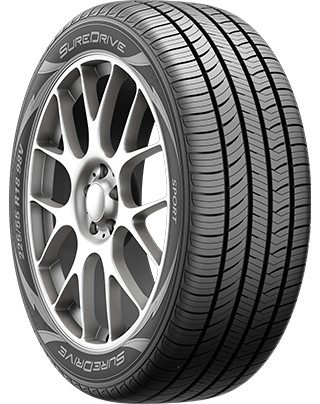
- No warranty
- All-Season
- Performance
 PROXES R1R
PROXES R1R
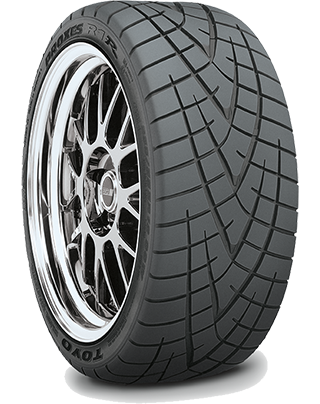
- No warranty
- Summer
- Performance
 PROXES Sport
PROXES Sport
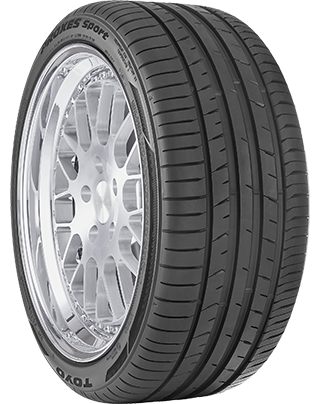
- No warranty
- Summer
- Performance
 PROXES Sport A/S
PROXES Sport A/S
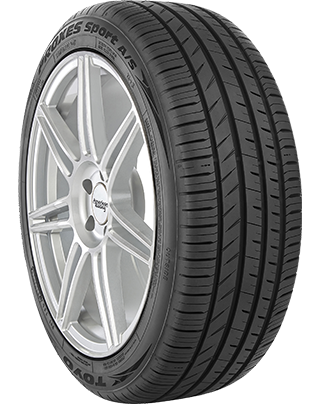
- No warranty
- All-Season
- Performance
1996 Toyota Supra Tire Information
Other than getting the proper tire size, you also want to think about a couple of other things when getting new Toyota Supra tires like how and where you drive, and how much you want to spend. When evaluating your driving conditions, think about where you live (countryside vs. city vs. mountains) and the kind of unexpected weather you're likely to experience. It's not uncommon for drivers in states that experience all four seasons to buy more than one set of tires. one for summer and one for winter. Other drivers prefer to purchase one all-season set to limit trips to the tire shop and make sure their vehicle is prepared in the rain, sleet, snow, or sun!
Next, consider your driving style. If you're an avid off-roader who yearns to pioneer new paths, you have very different tire needs than a highway commuter who doesn't hit the hills very often. Talk to a tire technician at Firestone Complete Auto Care for help choosing the best tire for you, or start shopping for Toyota Supra tires online.
1996 Toyota Supra Tire Installation & Rotation
We sell tires, but we also service them and care for all the around-the-wheel components. We're your one-stop shop for tire installation, rotation, and ongoing maintenance! Shop 1996 Toyota Supra tires online and schedule an installation appointment.
1996 Toyota Supra Tire Questions
-
Is Toyota tire inflation important? The right tire pressure can make all the difference. Proper tire inflation helps increase fuel economy, improve braking time, and boost tire lifespan! Even a small change in tire pressure can impact your driving.
-
What do the tire sidewall numbers mean for my Toyota Supra? The numbers on your tire sidewall give you information about tire speed rating, traction, treadwear, tire size, and load carrying capacity. Chat with a tire technician to learn how to read the numbers on your Toyota tires!
-
Can I check the tread depth on my Toyota tires at home? Stay on top of your tire tread depth to help avoid a dangerous drive. You can check tread depth with a penny. Hold the penny so that Abraham Lincoln is facing you, then place your penny into a tread groove upside down. If you can see the top of Abe’s head, your tread is shallow and it might be time for new Toyota Supra tires. Grab a penny. Hold the so that Abe Lincon's head is facing you and his hair is pointing toward the ground. Then, place the penny into a tread groove. If you can see the top of Abe’s head, your tread is shallow and it might be time for new Toyota Supra tires.
1996 Toyota Supra Repair
How do I learn more about auto repairs? Click on a service below to read about the types of Toyota Supra repairs we do at Firestone Complete Auto Care.
Get Repairs for Your 1996 Toyota Supra
Car repairs: for many drivers, that phrase is a dreadful one. But at Firestone Complete Auto Care, we strive to give you the excellent repair experience you deserve. When it’s time for 1996 Toyota Supra repair services, head to your nearest Firestone location and rest easy knowing that your Supra is in capable hands. We’ll start by assessing what repairs may be needed, and we’ll provide you with a detailed explanation of what we recommend. If a repair isn't necessary, we won't recommend it.
How Much Are Toyota Supra Repairs?
The cost to repair your 1996 Toyota Supra depends on the type of repair, prices of appropriate replacement parts, how much labor the repair will take, and your locale. We update them regularly to keep our deals fresh!
A few different aspects can influence repair costs for your 1996 Toyota Supra, like
1996 Toyota Supra Auto Repair Questions
-
Can scheduled maintenance help me avoid repairs? Don’t neglect scheduled maintenance. Sure, you could skip out on a few recommended maintenance services, but you may pay the price later. Bring your vehicle to Firestone Complete Auto Care at recommended service intervals to address minor issues before they get out of hand and keep your car running newer, longer.
-
What does it mean to be 'in tune' with your car? You know your vehicle. You also know when something feels 'off' with your vehicle. Pay attention when things don't run like they used to and stop by for a Courtesy Check when you notice an unusual sign, smell, or sensation. We might be able to help you prevent Toyota Supra repairs!
-
Why do you recommend certain repairs for my Toyota? We won’t recommend a service or repair for your 1996 Toyota Supra unless we think it’s necessary to keep you safe. Want to know more about a specific recommended repair? Ask! We’re here to help.
1996 Toyota Supra Brake Repair
Your Toyota Supra engine may be strong and reliable. But if you can’t stop it, it’s as good as scrap metal. If you’re experiencing squeaky brakes or a loss of braking power, don’t wait! Safe driving is difficult when your brakes are anything but their best. What's more, waiting for things to figure themselves out can result in more damage to your brakes and your wallet. Get your 1996 Toyota Supra brakes fixed at Firestone Complete Auto Care. Our brake repair services include pad/shoe replacement, brake rotor/drum machining, brake fluid exchange, and brake caliper and wheel cylinder installation.
Toyota Supra Brakes Frequently Asked Questions
-
Why is my Supra shaking as I brake? If your Supra shakes when you brake, you could be dealing with warped rotors, faulty brake calipers, worn brake pads or rotors, or loose or worn suspension parts. Schedule a free brake inspection at Firestone Complete Auto Care for help diagnosing your brake issue.
-
What is the average lifespan of Supra brake pads? Brake pads typically last about 30,000 to 40,000 miles. However, driving conditions can affect this range. Sticking to highway driving and braking smoothly can help extend the life of your brake pads, while towing heavy loads or frequently riding your brakes can shorten it.
-
Does brake fluid leak when the car is off? Your Supra brake system is a closed hydraulic system, which means that the brake fluid should not leak out of the system under normal circumstances. However, over time, the various components of the brake system can wear out or become damaged, which can cause brake fluid to leak out of the system.
When to Get Toyota Supra Drivetrain Repairs
Drivetrains for front, rear, and all-wheel-drive and 4WD vehicles are quite different, so you don't want to go to just anyone for drivetrain repair. You want to go to Firestone Complete Auto Care. We can help repair all of your 1996 Toyota Supra drivetrain components Your Toyota could be crying out for driveshaft repair if you notice resistance when turning, heavy vibrations in your floorboards, clunks when shifting, or vibration as your vehicle accelerates.
Questions About 1996 Toyota Supra
-
What are the symptoms of a damaged Toyota drivetrain system? Noises toward the back of your Toyota Supra, leaking fluid, trouble turning — these could all be signs of drivetrain damage you want to address. Take action before something more severe happens.
-
Why is my Supra malfunction indicator light (MIL) on? If your Supra has its malfunction warning light (more commonly called the check engine light) illuminated, it could indicate engine troubles, problems with the transmission, electrical issues, malfunctioning sensors, connector problems, or misfire issues.
-
Is a drivetrain malfunction in my Supra serious? Don't ignore a drivetrain malfunction in your Supra. As soon as you notice a problem, have it checked by a professional mechanic to diagnose the issue and carry out any necessary repairs. Driving with a faulty drivetrain is risky and may further damage your Supra.
Wheel Alignment for 1996 Toyota Supra
With an alignment service, adjustments are made to your Toyota Supra’s suspension system, the connection between the vehicle and the wheels. In an alignment service, your tire angles are adjusted according to measurements recommended by Toyota. Why? So that your tires can make contact with the road at the best possible angle. Bring your 1996 Toyota Supra in for a wheel alignment and we'll start with an alignment check. Then, we’ll adjust the angles as needed until they match recommended measurements from Toyota.
Questions About Toyota Supra Alignment
-
What can knock my Toyota Supra out of alignment? When it’s safe to do so, avoid driving over potholes or hitting curbs. These road obstacles can wreak havoc on your wheel alignment, as can wear and tear from rough road conditions.
-
How often should you get a wheel alignment for your Supra? Check your Supra owner's manual for Toyota's recommended interval. It's generally a good idea to check your alignment every 6,000 miles or 6 months, depending on which comes first.
-
Do you need an alignment with new Supra tires? It’s not mandatory to get an alignment after installing new tires on your Supra, but it can be a smart decision! Proper alignment from the jump can help improve handling, fuel efficiency, and tire wear.
Engine Repairs for Your 1996 Toyota Supra
If your 1996 Supra engine needs repairs, our expert techs will let you know what needs to be done and why before they get started. We make recommendations, but you make the final decision. If a repair isn’t urgent right now, we’ll let you know. If it's necessary for your safety, we'll make sure you understand that, too. We want to give you all the details you need to make an informed decision about your engine repairs. Turn to Firestone Complete Auto Care for your 1996 Supra engine repairs and you can feel confident knowing that we use Toyota-approved parts and components like the serpentine belt, oil gasket, sensors, or other parts.
Engine Q&A 1996 Toyota Supra
-
Why does the check engine light in my Supra turn on when I start my car? Generally, your check engine light turning on upon ignition is not a bad thing. It’s just your Supra firing up its circuits. The light should turn off in a bit, but come see us if it doesn't.
-
Are Toyota Supra engine noises bad? Strange engine sounds can be a sign something’s off in your Toyota Supra. Knocking or tapping could be a symptom of low oil. A high-pitched whistle could signal an intake leak or misaligned belt. Squealing can be traced back to a loose fan belt, and grinding might be a sign of brake problems rather than engine issues.
-
What could damage my Toyota Supra engine? Some driving habits are not so great for your engine. These include driving on a near-empty gas tank, flooring the gas pedal while the car is in Park, or accelerating too quickly, too soon. Protect your engine’s performance and efficiency by distancing yourself from these habits.
1996 Toyota Supra Tire Repair
If your 1996 Toyota Supra is in need of a tire inspection or possible flat tire repair, Firestone Complete Auto Care has your back. In some cases, a tire doesn’t have to be replaced – it can be plugged and patched with a simple repair. Depending on the damage, though, a repair might not be the right move. Our technicians can determine which option is best for your situation. To start, we’ll consider the location of tire damage, the type of issue, the size and scope of the damage, and the amount of wear on your tires.
If a repair on your 1996 Toyota Supra tire is feasible and safe, we'll follow three basic steps to repair it: (1) Separate the tire from the vehicle wheel, (2) fill the puncture to keep the moisture out, and (3) secure and seal the inner tire liner to ensure the tire is airtight.
Frequently Asked Toyota Supra Tire Repair Questions
-
What happens if I drive my Toyota on a flat tire? Driving on a flat tire is not a good idea. Your Supra engine will keep running with a flat tire, but you could damage your wheel by continuing to drive on a flat.
-
Can I use an emergency/temporary sealant to fix my Toyota's flat tire? Temporary sealants will solve your problem… for a little bit. If you’ve seen temporary or emergency tire sealant before (it usually comes in a can), it can be tempting to turn to this as a solution for your flat tire. Keep in mind that these fixes could buy you some time to get to Firestone Complete Auto Care for a proper repair, but they could also cause some harm in the process (for example, damage to your TPMS). Plus, using a product like this could void your tire warranty.
-
What can cause Supra tires to keep losing air? Your Supra tires might keep losing air due to a leaking valve stem, puncture or hole in the tire tread or sidewall, or damaged wheel.
1996 Toyota Supra Maintenance
You want your Toyota Supra to last as long as possible. If you put in the effort to keep up with proper maintenance, you could hit 200,000 miles (or beyond!) in your Supra.
About 1996 Toyota Supra Scheduled Maintenance
Instead of waiting for an issue to arise with your Supra, you can stay ahead of problems before they even begin. Just follow your 1996 Toyota Supra maintenance schedule! The recommended maintenance schedule is put together by Toyota, your vehicle manufacturer. Scheduled maintenance services can vary depending on driving conditions, climate, and other factors; however, recommended maintenance usually includes services like oil changes, tire rotations, brake pad replacement, filter changes, and fluid checks and exchanges. Staying on track with routine service appointments can help your Supra perform better, keep you safer on the road, and help you avoid expensive repairs caused by 1996 Toyota Supra problems later.
Overview of Essential Toyota Supra Maintenance Needs
Bring your 1996 Toyota Supra to Firestone Complete Auto Care for factory-recommended maintenance services and a skilled technician will start the appointment with a Courtesy Check. A Courtesy Check helps "set the stage" for your service and catch any small problems before they turn into big repairs. Each Courtesy Check includes a free battery test and an inspection of your Supra's windshield wiper blades, head and tail lights, filters, fluid levels, tires, and alignment.
Firestone Complete Auto Care is your spot for 1996 Toyota Supra maintenance. So visit us regularly, or visit us urgently. Many locations are open on weekends and in the evening.
1996 Toyota Supra Maintenance Q&A
-
When should I have Toyota Supra alignment checked? Check your car for pothole damage! If you’ve recently hit a pothole (or even if you don’t remember hitting one… they can be sneaky!) check your tire treads, tire sidewalls, and wheels for damage. Potholes can also knock your car out of alignment, so have your alignment checked if you suspect you’ve driven over a rough patch of road lately.
-
When should I use high mileage oil in my Toyota Supra? Got 75,000+ miles on the odometer? Consider high mileage motor oil. High mileage oil is formulated to address the specific problems encountered by high mileage vehicles, or those with more than 75,000 miles. It can help reduce oil consumption, smoke, and emissions from older Toyota Supra engines.
-
Can I ignore dashboard lights on my Toyota? It's better to get them addressed as soon as possible. An illuminated dashboard light means something in your vehicle isn't functioning like it should. Letting problems linger can mean bad news for your Toyota Supra, so be sure to take your car in for service as soon as you notice an illuminated dashboard light.
Battery Size & Replacement for 1996 Toyota Supra
Researching battery replacements for your Toyota Supra?
| Battery | Engine | Warranty | Cold Cranking Amps | |
|---|---|---|---|---|
| 24F-RP | L6/3.0L | Replacement 48 months | Performance months | 750 |
| 24F-3 | L6/3.0L | Replacement 24 months | Performance months | 650 |
| 24F-6 | L6/3.0L | Replacement 36 months | Performance months | 750 |
1996 Toyota Supra Batteries
The average car battery lasts three to five years. You want to replace your 1996 Toyota Supra battery before it fails and leaves you stranded. Watch for signs that your current battery is getting too old or too weak. A sluggish engine start, an illuminated battery or check engine light, swollen battery case, corroded battery terminals, or faded headlights may all indicate that your battery is on its last leg.
Or, you can get a complimentary battery check at your nearest Firestone Complete Auto Care. Drop in for a free battery check and, if needed, a replacement battery for your 1996 Toyota Supra. Automotive batteries are just one of our many areas of expertise. Our technicians are well-acquainted with Toyota’s service specs for Supra battery cold cranking amps and reserve capacity. Get help figuring out the battery size that's best for your Supra, and schedule a weekday or weekend battery replacement service for your car.
Answers to Your Toyota Supra Car Battery Questions
-
Why doesn’t my Toyota Supra battery stay charged? A battery is in its final hour when it will no longer hold a charge. The battery may be too old. Or, you may have been leaving your car doors ajar and the cabin light at night. Stop by for a complimentary battery check at your favorite Firestone Complete Auto Care and get a handle on your car battery’s health.
-
What is the average lifespan of a car battery? A car battery normally lasts three to five years, but this number can vary based on battery type, your driving habits, and battery maintenance.
-
Why is there white, crusty buildup on my Supra’s battery post? A chemical reaction between battery acid and the air can cause a white, crusty buildup to form on the terminals of your Supra car battery. This buildup — known as corrosion — can impede the flow of electricity and cause a range of issues, from poor performance to premature battery failure.
Oil Changes for 1996 Toyota Supra
Your 1996 Supra’s oil should be changed according to Toyota’s recommended oil change intervals. No matter the mileage, your Supra may need its oil changed ASAP if your check engine light is on, you hear knocking sounds coming from the engine, smell oil inside the car, or notice excess vehicle exhaust. You may also need an oil change more frequently than Toyota recommends if you haul heavy loads, frequent dusty roads, adventure off-road, or go at low speeds on long distance trips.
Whether it’s synthetic, conventional, or a blend of both — your local Firestone Complete Auto Care has the right oil for your Toyota Supra. Check your owner's manual and talk with a technician to select the right Toyota Supra oil, whether it's Quaker State® Advanced Durability™ conventional oil, Pennzoil® High Mileage Vehicle® motor oil, Pennzoil Platinum® Full Synthetic motor oil with PurePlus™ Technology, or Shell Rotella® heavy-duty engine oil. In an oil change service, a technician will change your Supra's oil, replace and recycle the old oil and filter, check all of your other filters, refill vital car fluids, and perform a courtesy inspection on your entire vehicle. Let the experts take care of your Supra’s engine by making an oil change appointment today.
1996 Toyota Supra Oil Change Questions
-
Why is my Toyota Supra oil light illuminated? The oil change light in your Toyota Supra could be triggered by an overdue oil change. However, if the oil pressure light is on, you may be dealing with low engine oil, a failing oil pump, a clogged oil filter, or a malfunctioning oil pressure sensor.
-
Can I change my Toyota oil on my own? Changing your own oil isn't as convenient as you might think. It requires special tools and old oil must be disposed of properly. Having your oil professionally changed reduces the chances of something going wrong with the oil change, but also with your vehicle down the road.
-
Why is my Toyota exhaust smoke gray or blue? Your engine could be burning oil due to a leak. It may be time for a pro to take a look. A leak can be caused by a variety of issues including faulty valve seals, blown piston rings, or damaged cylinder walls.
1996 Toyota Supra Tune-Up & Engine Service
Routine engine tune-ups can bring power back to your Supra. Your local Firestone Complete Auto Care offers a range of engine tune-up services for your 1996 Toyota Supra. The standard Firestone Tune-Up is one service option. It includes a complete visual inspection of engine components, installation of new spark plugs, and a lifetime warranty on parts*. Another service option pays special attention to the filters in your Supra. Specifically, we replace the fuel filter and air filter. The third tune-up option is a fuel system cleaning service, which is a three-step process that removes varnish, dirt, and carbon deposits on your Supra's fuel injectors, throttle body, and throttle plate. This can improve your fuel system’s performance (and therefore, your engine’s performance). Consider this when choosing a tune-up service for your Supra: your vehicle’s maintenance record and mileage can determine which service is best. Ask one of our technicians what your vehicle needs, based on your driving habits and your car’s current condition.
*Ask a Firestone Complete Auto Care teammate about full terms and conditions for warranties.
Common Engine Tune-Up Q&A for 1996 Toyota Supra
-
When should Toyota Supra spark plugs be replaced? When it’s time to replace the spark plugs, don’t delay. These small (but vital!) parts provide the electric spark that your car needs in order to start, and old spark plugs can prevent your car from starting at all. Replace spark plugs on time or about every 30,000 miles or so.
-
What should I do if I see leaks under my Supra? Puddles could indicate that your vehicle is leaking coolant, oil, or brake fluid. Ignoring these leaks can lead to permanent engine damage, so address these symptoms ASAP with a tune-up service.
-
How often should I clean my Toyota Supra fuel injectors? The cleaning schedule for vehicle fuel injectors varies depending on your driving conditions and the type of fuel you use. Some manufacturers suggest cleaning your fuel system as part of routine maintenance, while others will recommend it on an as-needed basis if you’re experiencing poor performance. Reference your Toyota owner’s manual for exact guidelines.
1996 Toyota Supra Suspension Service & Repair
During the first few years you had your 1996 Toyota Supra, you probably enjoyed a smooth and steady ride. But these days, things are starting to feel a bit rough. Maybe your Supra bounces, drifts to one side, or makes noise whenever you turn or drive over a speed bump. The first sign of trouble is the best time to bring your 1996 Toyota Supra in for steering and suspension services. We’ll get to the source of your car problems and, if your car needs steering and suspension repairs, we’ll go over the services you need and how much they will cost before we do any work.
1996 Supra Steering & Suspension Q&A
-
Why does my Toyota Supra bounce so much? Damaged struts or shocks can't dampen road bumps properly, causing your vehicle to feel like a trampoline after each dip or bump.
-
Why does my Supra tilt forward when I hit the brakes? When you brake, the forward momentum combined with your vehicle's weight sends a lot of force to the vehicle's front end. A bad suspension can cause all that weight and force to push the front end downward.
-
What role do tire pressure and tread depth play in my Toyota's suspension? Proper tire care can reduce strain on the suspension system, and also alert you to the need for new tires. Uneven tire wear is one sign of steering and suspension system problems, but it can also contribute to more.
Convenient & Local 1996 Toyota Supra A/C Service
Technicians at Firestone Complete Auto Care are ready to help you address your 1996 Toyota Supra A/C problems. During this initial A/C performance check, we’ll look at the state of your 1996 Toyota Supra’s A/C system to see if repair work is required. This check includes a visual inspection, performance test, and pressure and leak test.
When we perform an A/C repair on your 1996 Toyota Supra, we’ll also do an A/C evacuation and recharge. To do this, one of our technicians will remove the refrigerant in your A/C system (if there is even any left to remove). Next, they will evacuate the system according to Toyota's recommendations. To finish, we’ll add new refrigerant to recharge the A/C system.
Questions About 1996 Toyota Supra A/C Systems
-
Why is my Supra A/C blowing hot air? If your car’s air conditioning isn’t blowing cold air at all (or it tries, then turns warm), you could have a clogged expansion valve, a faulty compressor clutch, a leak, or a malfunctioning fuse in the system.
-
How does my A/C system get a leak? To put it simply, age and moisture are some of the main causes of leaks in your A/C. Over time, rubber gaskets and seals can wear out, which pushes much-needed refrigerant out of your Supra’s A/C system — and lets outside moisture get in, which can take a toll on internal A/C components.
-
Why does my Supra’s A/C only work when the car is moving? There could be issues with one or more components in the air conditioning or electrical system. Your Supra may have a faulty cooling fan or low refrigerant.
Transmission Services for 1996 Toyota Supra
The transmission delivers power from the engine to the wheels so that you can drive on your terms. Because of the transmission’s responsibility to translate the right dose of power into the right amount of speed, a small transmission issue can put a big dent in your Supra’s performance. 1996 Toyota Supra transmission issues could include shifting delays, grinding when accelerating, the car shaking on the road, or whistling noises and a burning smell coming from under the hood. If you don’t pay attention to Toyota Supra transmission trouble your could suffer a loss in fuel efficiency or find that you can't drive your Supra at all. Our technicians know how to service your 1996 Supra up to Toyota-recommended standards. If you think there’s something wrong with your Supra’s transmission, schedule an appointment at your local Firestone Complete Auto Care to help keep your Toyota running for miles and miles.
1996 Toyota Supra Transmission Questions & Answers
-
When should I have my Supra's transmission fluid checked or exchanged? Maintaining your Toyota Supra transmission fluid is one of the best ways to maintain your transmission's health. A general rule of thumb is to have your transmission fluid checked and changed about every 30,000 to 60,000 miles, but that timeline can change if you're hard on your Toyota. Leaks or low transmission fluid are easy to spot and affordable to repair.
-
Is it possible for transmission fluid to leak from my Toyota Supra? Yes. Toyota Supra transmission fluid can leak as time passes, which may lead to transmission problems. Transmission fluid leaks are often caused by worn or damaged transmission components, such as the transmission pan, cooler lines, seals, or housing. An overfilled transmission may also be behind your transmission fluid leak.
-
Is it okay to drive a Supra with a transmission fluid leak? Driving with a transmission fluid leak is not recommended. Transmission fluid is essential to the proper operation of the transmission system, and a leak can cause serious problems, including reduced performance, overheating, and potentially transmission failure.
1996 Toyota Supra Inspections
At Firestone Complete Auto Care, we perform a multi-point Courtesy Check during any vehicle service. The technician will begin by testing your Toyota Supra's battery to find out how much charge is remaining on it. We’ll follow the battery inspection with a visual check of your Toyota Supra’s windshield wiper blades, lights, filters, alignment, tires, hoses, belts and fluid levels.
While every visit to your local Firestone Complete Auto Care includes a Courtesy Check, we can also dig deeper and perform a Complete Vehicle Inspection on your 1996 Toyota Supra if you prefer. In addition to a visual check of everything that's included in a Courtesy Check, a Complete Vehicle Inspection also includes a thorough manual inspection of your exhaust system, steering and suspension, and brakes. With this inspection, we want to help you stay on top of any issues that may need immediate attention in order to prevent further damage.
Depending on your location, you may be able to take care of your state inspection or safety test at your local Firestone Complete Auto Care. Inspections are performed on a state-by-state basis and requirements vary.
1996 Toyota Supra Vehicle Inspection Q and A
-
How do I know if my Toyota Supra needs a check-up? It needs a check-up if something feels 'off' to you, the driver. Your Toyota Supra could benefit from a Courtesy Check if it has any illuminated dashboard lights, you hear weird noises coming from any part, the engine doesn't start sometimes, or your vehicle pulls to one side.
-
Can you fix my 1996 Toyota Supra so it will pass a state inspection test? Did your vehicle fail a recent state inspection test? We can help. Come in for a checkup and we’ll diagnose the issue.
-
When is the best time to get a complete vehicle inspection for my Toyota Supra? It’s generally a good idea to get a complete vehicle inspection for your Toyota Supra before a road trip and/or when something strange occurs and you are unable to find the cause. Signs something is up include dashboard lights illuminating, odd noises coming from the engine, and your steering feeling loose or tight.
1996 Toyota Supra Radiator Service
Regular, proactive service on the radiator in your 1996 Toyota Supra is a huge factor in the longevity of your engine. In fact, Toyota recommends replacing coolant/antifreeze at specific intervals, but you can also take note of any signs your radiator is going bad. You could be on the verge of a radiator-induced engine breakdown if you notice leaking coolant, overheating, or an illuminated low coolant dashboard light.
If you bring your vehicle to Firestone Complete Auto Care, we start with a comprehensive inspection of your Toyota Supra’s cooling system. Then, we’ll move on to a machine-powered coolant exchange. Finally, we’ll refill the flushed sealants, lubricants and chemicals, then do a pressure check to catch any possible leaks. If you’re about to lose your cool over a too-hot engine, rest assured that we’re here to give your 1996 Toyota Supra the top-notch service it needs.
Questions About Toyota Supra Radiators
-
What does the coolant light on my Toyota dashboard mean? f the coolant light illuminates on your dashboard, your engine could be overheating. Pull over to a safe area and wait for the engine to cool down. Then, head to your nearest Firestone Complete Auto Care for a coolant system check.
-
What is causing my Supra to overheat? Low coolant, a damaged cooling fan, a faulty water pump, a malfunctioning thermostat, or a clogged radiator could all cause your Toyota Supra engine to overheat.
-
My Supra radiator sounds like it's rumbling or boiling! What's up? There could be air pockets in your Supra’s cooling system. You might also have a clogged radiator or faulty radiator cap (this last one is an easy fix!).